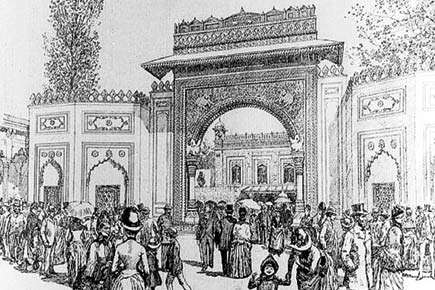The repositories of history are more than what meets the eye. An academic explains


Gwalior Gateway: Stone gateway, forming entrance to the Indian Court in the Colonial and Indian Exhibition of 1886 in South Kensington. It got transferred to the Victoria and Albert Museum
Dr Kavita Singh, who teaches art history at the School of Art and Aesthetics in Jawaharlal Nehru University, Delhi, has engaged deeply with the history and other intriguing facets of museums in her career spanning 30 years. Yesterday, she was in the city to deliver the 19th Karl Khandalavala Memorial Lecture - a prestigious annual event of the Chhatrapati Shivaji Maharaj Vastu Sangrahalaya - on the topic, Uncollecting India: Hidden Histories of a Museum. We caught up with Dr Singh to look at museums through her lens. Excerpts from an interview:
ADVERTISEMENT

Dr Kavita Singh
'Uncollecting' is a fascinating term. What does it imply in the context of the lecture?
We know the museum as a place that makes a commitment to caring for the things it has collected. In the world of museums, museums do, at times, "uncollect" objects. They do so for all sorts of reasons, from pressures on space and budget, in response to changing fashions and tastes, to a shift in the museum's mission and objectives, in response to ethical concerns or a desire to give something back to the community from which the object came.
Your lecture follows four objects that were taken to the Victoria & Albert Museum from India. What made them fall out of favour?
Each of the four objects that travelled to London in the 19th century under colonial auspices came from a different place and period, and were made of a different material. What links them is the fact that they were all physically large, architectural scale objects and in my talk, I suggest that this very large scale was one, but only one, of the factors that affected their fate.
What factors play a role in making museums political?
A museum acquires some things and deems them to be of such value that they are worth showing to the public, and preserving for the future. That in itself is political, isn't it? As museums are authoritative institutions, the information that starts flowing out about objects and their histories is taken to be the truth. One of the histories I am working on tracks the national museums that were established in India, Pakistan and Bangladesh. Here you can see how museums, which inherit very similar corpuses of objects, reshape their narratives in line with what their respective nations need their heritage to be.
 Subscribe today by clicking the link and stay updated with the latest news!" Click here!
Subscribe today by clicking the link and stay updated with the latest news!" Click here!







